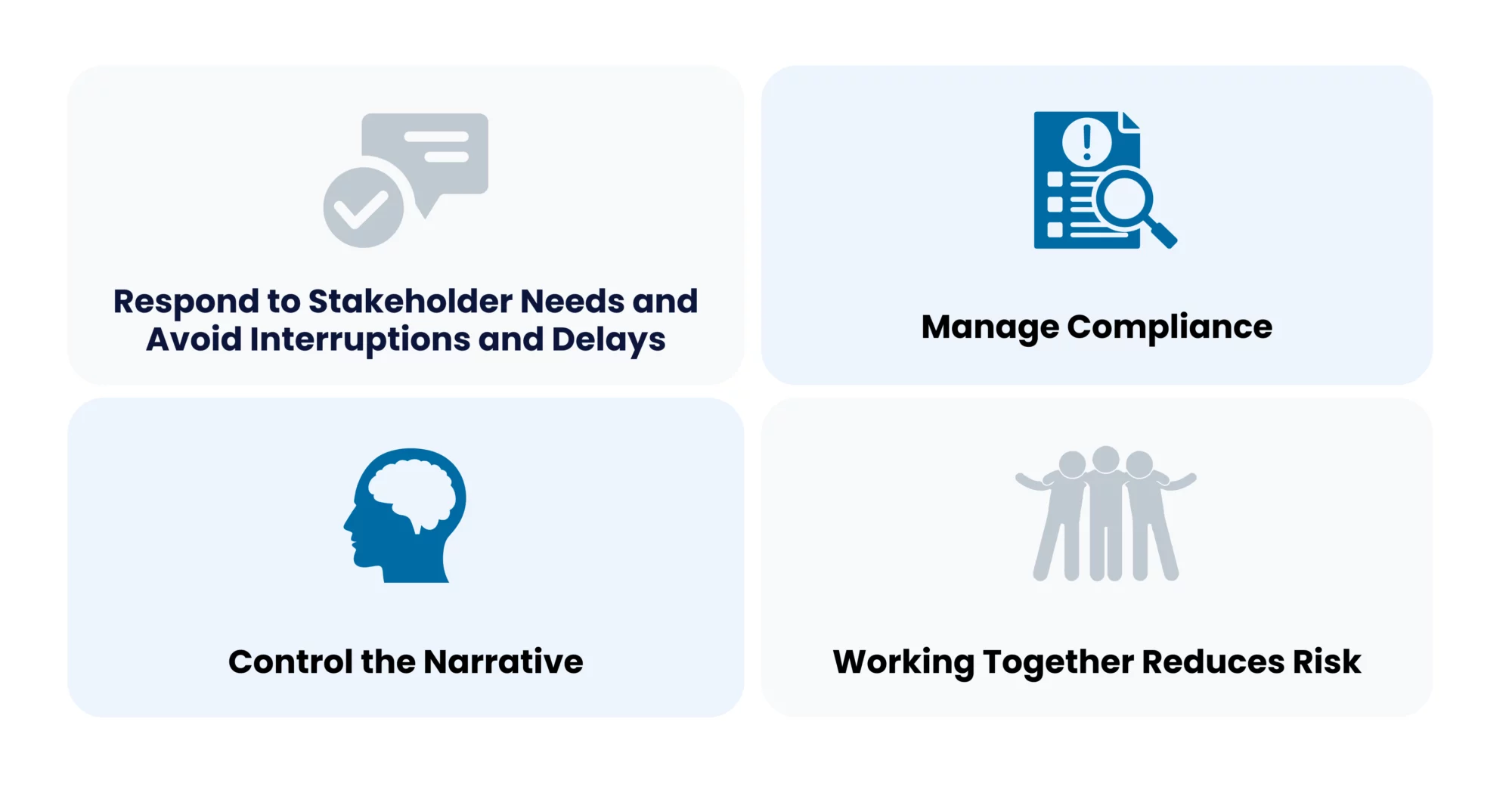Stakeholders can either get behind your project or resist it. They have a huge influence on your success and you need to know who they are, what they care about, and how to take action. Here is how a stakeholder relationship management platform can reduce risk and help your project to be a success.
Resistance and stakeholder activism are real risks that can potentially result in project delays, penalties, or even cancellations. However, you can dramatically reduce these risks (and help ensure you deliver expected value), if you are proactive about managing your stakeholder relationships.
A dedicated stakeholder relationship management (SRM) platform can help you achieve this. It is a space to help you understand, build and grow your relationships with diverse stakeholders that are affected by or have an influence on your project.
Unlike a CRM (which is typically concerned with the management of supplier-to-customer relationships regarding the sale and delivery of products and services), an SRM is designed to record and manage all stakeholder details and interactions (one-to-one and one-to-many) and analyse and report on this information to help create better outcomes or all.
Stakeholder relationships are varied and complex, but an SRM can help you to manage them efficiently and reduce your project risk.

How to Reduce Risks with an SRM
Stakeholder relationships are varied and complex, but here are four ways an SRM can help you manage them efficiently and reduce your project risk.
- Respond to Stakeholder Needs and Avoid Interruptions and Delays
- Manage Compliance
- Control the Narrative
- Working Together Reduces Risk
1. Respond to Stakeholder Needs and Avoid Interruptions and Delays
To gain support from stakeholders, your project needs to align with their values and aspirations. A stakeholder management platform can help you do this by storing all stakeholder interactions in a central hub, where you can analyse varied needs and identify risks before they arise. Sentiment, complaints, and emerging conversation themes can also be tracked throughout your project so that you can deal with issues (and leverage positive sentiment) proactively.
Every stakeholder interaction can be easily recorded, meaning you can unpack the history of a relationship at any point in time, arming you with context the next time you engage. Informed consultations throughout the project and direct responses to concerns lead to stronger relationships, greater stakeholder ‘buy-in’, and a lower risk of conflict and delays.
2. Manage Compliance
An SRM stores your stakeholder data in a secure and central location so that you can meet privacy and confidentiality requirements. An alternative is spreadsheets, which are hard to manage and don’t force your team to input information in a compliant way. An SRM will help you demonstrate compliance with the requirements planning and environmental legislation regarding the consultation of stakeholders on projects.
This becomes increasingly challenging on large and complex projects with many thousands of stakeholders and only gets more challenging when you are managing multiple projects, particularly where they overlap on people and place. You are also likely to have internal policies and protocols to meet and using an SRM, you can quickly access all of your stakeholder engagement activity at any time.
3. Control the Narrative
Considering the strong presence of social media and mobile phones, stakeholders have the tools to monitor, record, and share information about your project very quickly. However, by consolidating stakeholder feedback, you can analyse sentiment trends and conversation themes in the early days. This helps you to quickly pinpoint negative sentiments and perceptions that could be damaging to your project’s success.
You can adapt your strategy or take charge of the narrative by engaging directly with relevant stakeholders. For example, using filtering and communications tools, you could run a search for high-priority stakeholders with negative sentiment and reach out to them with relevant information or open up a meaningful dialogue.
By using Consultation Manager’s SMS and email tools, it can help you keep your stakeholders in the loop and deliver the right message with confidence by segmenting your stakeholder groups and reading the room before you hit send.
4. Working Together Reduces Risk
An SRM will help you to prioritise stakeholders and target engagement efforts with greater precision, leading to better outcomes with less effort. Showing that you’re willing to work together with your stakeholders can also reduce resistance and risk. If you track every interaction in an SRM, you can also easily provide evidence that you have taken the time to ensure acceptable outcomes for your stakeholders.
This article has been updated from 2022.

